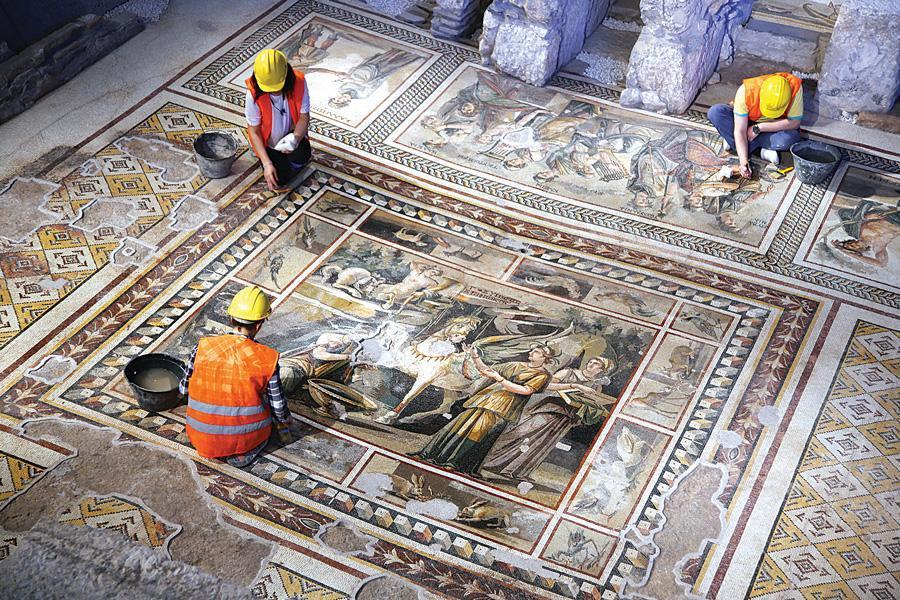
Visitors will soon be able to stay in a hotel in the eastern province of Hatay designed around and featuring archaeological finds dating back to the Hellenistic, Roman, Byzantine, Medieval and Islamic periods.
The museum-hotel concept was inspired by the discovery of the artifacts nine years ago at the hotel construction site in the central district of Antakya.
The finds prompted nine years of excavations, initiated by the presidency of Hatay Museum Directorate and the Adana Regional Council for the Protection of Cultural Heritage.
The archaeological digs revealed multiple layers of artifacts from different periods of history.
During the excavations, while the construction of the hotel was in progress, the artifacts were carefully preserved in their original locations. Meanwhile, the Ministry of Culture and Tourism launched an effort to establish a museum where the artifacts were found.
The new museum, occupying an area of approximately 1,000 square meters, will exhibit unique relics from the past, including Hellenistic fortification walls, a mosaic fragment decorated with bird figures from the fifth century and a large, sprawling Roman bath complex.
The museum will also have a second-century mosaic depicting the Roman winged horse “Pegasus” surrounded by water nymphs and the world’s largest one-piece floor mosaic, which covers an area of 1,200 square meters and is believed to have been used as a public space in the sixth century.
Tourists, who visit the museum, may also book a room in the hotel built at the top of the museum.
A historical period of five periods
Speaking to state-run Anadolu Agency, Hatay Archaeological Museum Director Nalan Çopuroğlu Yastı said that the owner of the land, who wanted to build a hotel, applied to add the museum because the site was a third-degree archaeological site and the drilling operations unearthed the archaeological artifacts.
Yastı said that the museum-hotel project was designed to show the artifacts to the public while still continuing the investment in the hotel. She said that the museum contains traces from five historical periods. Some 191 movable inventory artifacts will also be exhibited in the museum.
“All of the inventory artifacts will be displayed in the upper section of the museum. Our visitors will be able to visit the closed museum space and also see the small findings behind windows,” Yastı added.
“We will inaugurate the museum part in the coming months. The museum section will be owned by the Culture and Tourism Ministry.”